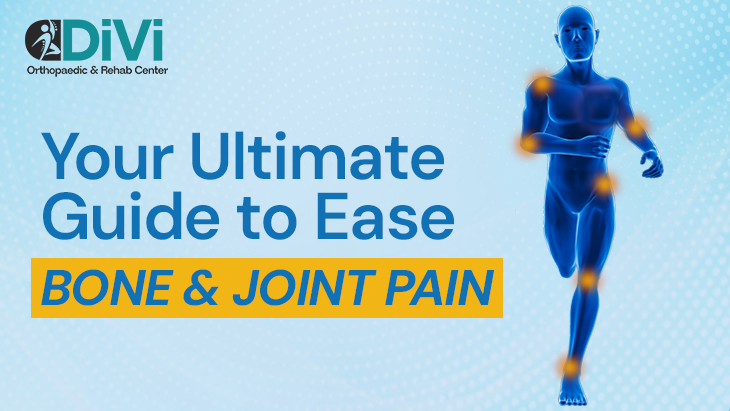Bone and joint pain affects daily life. It slows you down, limits movement, and disrupts sleep. Whether you’re standing, walking, or lifting something light, the pain is there. It is common, but that does not mean it should be ignored.
What Causes Bone and Joint Pain?
There are many reasons why people experience this type of pain. Age is one. As bones weaken and joints wear down, pain becomes more frequent. Injuries also play a role. A fall or twist can lead to long-term discomfort.
In some cases, autoimmune conditions like arthritis make the body attack itself, leading to swelling and stiffness. Lifestyle factors also matter. Sitting too long, carrying extra weight, or using poor posture can add pressure to bones and joints. Over time, the pain builds.
Understanding Bone and Joint Conditions
It helps to know what might be going wrong in your body. Osteoarthritis is the most common issue. It wears down the cartilage that cushions the joints. When that padding is gone, bones rub together, and that causes pain.
Rheumatoid arthritis is different. It affects the lining of the joints and triggers inflammation. There is also osteoporosis, where bones become weak and are more likely to break. All of these conditions reduce movement and increase discomfort. Understanding bone and joint conditions is the first step to handling them better.
Early Signs You Should Not Ignore
Some signs point to more than everyday aches. When the pain persists beyond a few weeks or when the affected joint is swollen and feels warm to the touch, then there may be something more serious going on. Warning signs also include clicking or grinding, loss of strength or sharp pain. Ignoring these signs might make things worse. It’s better to get checked early and know what you’re dealing with.
Foods for Bone and Joint Health
What you eat affects your bones and joints. Calcium and vitamin D are vital. You can get them from dairy products, eggs, and leafy greens. Fish such as salmon contain omega-3 fatty acids that decrease inflammation. Nuts, seeds and berries are also useful in that they combat free radicals, which destroy cells.
Pain can be aggravated by processed foods, sugar, and excessive salt. They raise inflammation. Choosing the right foods for bone and joint health does not cure the issue, but it supports the body’s ability to recover and stay strong.
Simple Habits That Help
Movement is important. Light stretching, walking, or swimming will maintain the flexibility of joints and muscle strength. Sleep is also important. Overuse makes pain worse, but so does inactivity. Balance is what matters. Posture plays a big role. Sitting straight and lifting properly can reduce pressure on joints. And so can good shoes. Well-supported flat shoes save the knees and the spine from the additional pressure.
When to See an Orthopedic Doctor for Bone and Joint Pain?
If pain is constant or gets worse with time, it is time to get medical help. Doctors can identify the cause and suggest the right plan. Waiting too long could lead to more damage. Bone and joint pain should not control your life. Learn what causes it. Eat right. Move more. Choose habits that protect your body. Early action makes a difference. Small steps each day can ease the pain and improve how you feel.
If you’re living with constant knee, hip, shoulder, or back pain, it can make even simple daily tasks difficult. Whether you’re in Andheri West, Juhu, or Malad, help is close by. From advanced treatments like robotic joint replacement, arthritis care, sports injury management to personalized physiotherapy, you can get back to moving comfortably.
Book your appointment with Dr. Bukalsaria at Divi Orthopaedic today.






